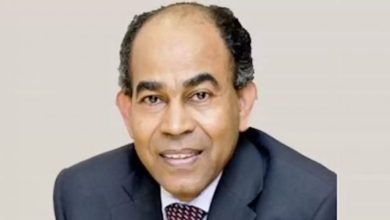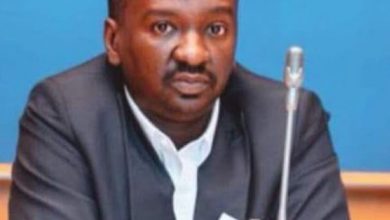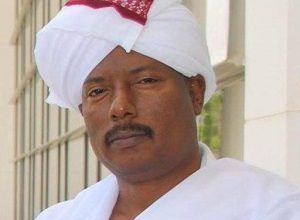Darfur and the Sudanese Nation: Better Late Than Never (1-2)

By Abdullah Ali Ibrahim
The discussion surrounding the remarks of Lieutenant General Abdel Fattah al-Burhan to journalists last Sunday hinted at the possibility of Sudan’s imminent division. However, neither his words nor the comments from the Rapid Support Forces (RSF) suggested such a dire outcome. In his speech, al-Burhan reaffirmed the army’s commitment to ending the war in Darfur before any other state in the north or central regions, emphasizing Sudan’s unity. The RSF, for its part, stated that if the army continued to refuse negotiations, it might consider forming a government in Khartoum, rather than in any other location.
Nevertheless, these fears of separation might have stemmed from al-Burhan’s poorly communicated message. He mentioned that people had been discussing proposals where Khartoum would be under the control of the army, while Al-Fashir, the capital of Darfur, would be under the RSF. He later added that the proposal suggested that Khartoum and Al-Jazira would be under the army’s control, Al-Fashir under joint forces (including allied armed movements), and the remaining areas under the RSF.
It’s possible that people misunderstood this as an actual offer, despite al-Burhan’s statement that it had not been formally proposed, and that it was merely the wishful thinking of what he referred to as “the new colonizers.” He even asserted that he would not allow anyone to present such a proposal. One might wonder why al-Burhan felt the need to inform the public, already anxious about the country’s potential division, about these ideas that supposedly only exist in the minds of those harboring such projects, especially since no one had actually proposed such a division to him. It’s hard for people, already concerned about the unity of their country, to believe that this proposal for division is just “dream talk,” as he put it. They might instead think that the proposal did occur, and al-Burhan is merely downplaying it.
By raising this issue, al-Burhan unintentionally stirred fears of separation. The elite weighed in on the matter in their own ways. Khalid Omar Yousif, a leader in the Democratic and Civil Forces Coordination (“Taqaddum”), stated that division is a real possibility. The international community has begun to treat Sudan as zones of influence divided between the army and the RSF, and even the Sudan People’s Liberation Movement (SPLM), which distanced itself from Sudan over a decade ago and established its independent state in the Nuba Mountains of South Kordofan. Khalid expressed his fear of Sudan’s fragmentation, arguing that the RSF’s claim of establishing a government in Khartoum to undermine al-Burhan’s legitimacy could lead to the risk of division and a repeat of the Libyan experience. However, the RSF’s idea of forming its government in Khartoum is closer to unity than division since it would be in the historical center of the country. The RSF even stated that it would not allow Sudan to be dismembered as happened with the secession of South Sudan in 2011.
The Communist Party leader Taj al-Sir Osman suggested that al-Burhan’s refusal to negotiate, as evidenced by his boycott of the Geneva Conference (on August 14th), would fuel the war, “threatening the country’s unity after the RSF’s statement that it might resort to forming a government in Khartoum to undermine al-Burhan’s legitimacy, which would mean the risk of division and a repeat of the Libyan experience.”
The division of Sudan is a major national concern. A country that lost a third of its land and people with the secession of its South naturally becomes apprehensive when confronted with such warnings and threats as mentioned above. The saying goes, “He who has been bitten by a snake fears a piece of rope.” However, no one has yet provided convincing evidence that Sudan is on the brink of division. None of the parties in this conflict have made any explicit move toward secession from any part of Sudan. This is unlike the situation with South Sudan, whose elite called for secession, a demand that was marked by the Southern Rebellion in 1955, even before independence. The secession eventually occurred through negotiation after a long war, with a peace agreement granting the South the right to self-determination, which it chose in a 2011 referendum.
Most of the fears regarding Sudan’s division have come from three sources:
First: From the Libyan model, divided between Benghazi and Tripoli. We saw both Khalid Omar Yousif and Taj al-Sir Osman refer to it, though not in agreement. However, those who compare this model to the Sudanese situation overlook two things: First, Benghazi and Tripoli were separate states until they were unified by Italian colonialism in 1924. Secondly, unlike Sudan, Libya fought its civil war with militias from both sides and lacked a professional national army as we have. Regardless of the importance of these factors, they must be considered when comparing the situations in Sudan and Libya.
Second: Regarding Darfur and Sudan, during the civil war in Darfur, it was widely believed that the region had been isolated from Sudan during its historical sultanate until it was subdued by the Turco-Egyptian rule (1821-1885) in 1874, a decade before the fall of the regime itself at the hands of the Mahdist revolution. Darfur was also isolated from Sudan after it was colonized by the British, who incorporated it into Sudan nearly two decades after occupying the country in 1898.



